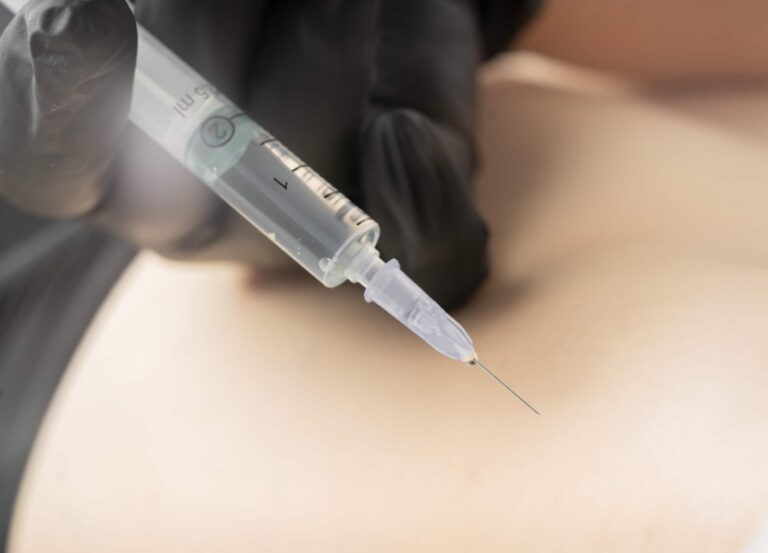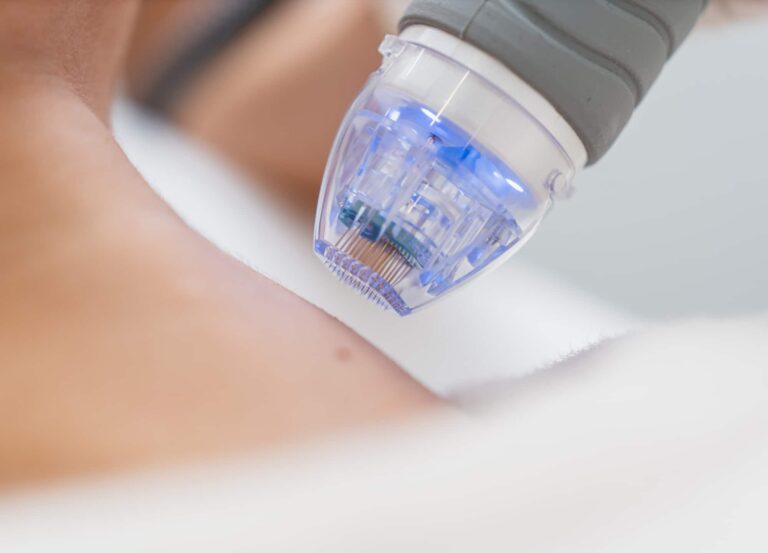It’s sad but true: Most of us don’t always read the fine print. If you’ve ever scrolled straight to the bottom of a “terms & conditions” agreement or initialed a tax statement without full knowledge of exactly what you’re signing, you’re not alone. That strategy might suffice for downloading a new app, but it doesn’t fly in the doctor’s office. When a medical office presents you with a form, it’s in your best interest to understand exactly what you’re agreeing to. “An educated patient can make all the difference in the world,” says Dr. Jeff Segal, a doctor, an attorney and the founder of Medical Justice.
If you’re eager to get on with the treatment and you trust your doctor, you may not stop and read every document closely. That’s a mistake—and we asked an expert to explain why. Ahead, we dive into common things you should know about or may see in consent forms, although this is by no means an exhaustive list. Read this before you sign on the dotted line.
You should have a conversation about risks before signing your form.
“[The] consent form is the document meant to memorialize the consent process,” says Segal. The consent form shouldn’t be the only place you hear about risks of treatment, and you should sign only after the doctor has explained exactly what to expect. “A document is never enough. The patient must be given a meaningful explanation of the risks and benefits of any procedure, including the risk of doing nothing,” says Dr. Segal. When you sign the consent form, it means that a conversation about risks has taken place and you’re agreeing to move forward with the procedure with full knowledge of what it entails.
Related: 5 Common Reasons Plastic Surgeons Will Refuse to Operate On You
The consent form should list the common risks of your procedure.
The treatment risks that are discussed beforehand by the patient and their doctor should also be clearly stated on the consent form for the patient to review again. “As a rule of thumb, the form should include the common risks and the uncommon risks that are serious,” explains Dr. Segal. Legally, the form does not need to include every single worst-case scenario. Instead, the standard is “what a reasonable patient would want to know to make an informed decision,” says Dr. Segal.
To help break this down, Dr. Segal takes a consent form for facial filler as an example. Facial filler has a few common risks, like bleeding, bruising, and infection, none of which are life threatening. Filler also carries the risk of embolus, or fat developing within the blood vessel, which can cause more serious issues, like blindness or stroke. These are all risks a doctor should address in the consent process, since knowledge of the risks can help a patient make an informed decision about whether to get facial fillers. What’s more, “it educates the patient, so if a patient does experience such a complication, [they] will know to quickly call the doctor for urgent treatment,” says Dr. Segal.
You should understand the cost of the treatment and the recovery process.
Consent also includes a reasonable understanding of the costs associated with your procedure and the recovery process you’ll be facing afterward. “This helps manage expectations. Nobody likes surprises related to risks, treatment course, or money,” says Dr. Segal.
The form can be either abridged or detailed.
There is no set length or template for plastic surgery consent forms. Your doctor’s office may present you with a document that’s more than 10 pages long or an abridged version with far less detail. Dr. Segal prefers longer documents that provide more information to the patient, even though they may seem more overwhelming at first. It’s better to be armed with more information regarding your treatment than with less.
You should receive the consent form well before your procedure.
For surgical procedures, the doctor’s office should present you with a consent form during the decision process, not the day you’re scheduled to go into the operating room. This way, you have plenty of time to consider the treatment and you aren’t pressured into signing anything immediately before surgery.
The form will lay out your side of the bargain.
In addition to what you can expect of the doctor, some consent forms will describe the doctor’s expectations of you. “For example, smoking impairs wound healing, so the document may ask the patient to agree to stop smoking in the pre-op and post-op period,” says Dr. Segal. “In addition, patients may be told what they must do pre-op and post-op to obtain optimal outcome. Examples include stopping certain medications, addressing the wound post-op, making scheduled post-op appointments, limiting certain strenuous activities, etc.”
Related: 8 Things Reputable Doctors Never Do
The form may have a non-disparagement clause—but that doesn’t mean it’s enforceable.
If you see a non-disparagement clause (in other words, a clause that prohibits one party from publicly criticizing the other) in your consent form, the best way to understand it is to speak one-on-one with your doctor. Dr. Segal directs us to the Consumer Review Freedom Act, a federal law passed in 2018 that makes non-disparagement clauses unenforceable if they’re part of a form agreement. However, the law applies to form or template agreements only. If your consent form has been individually negotiated, the provision stands. Dr. Segal offers an example: “If a patient has a revision procedure after an initial procedure and the doctor decides to perform the revision at no cost, that doctor can ask for a non-disparagement clause as consideration for doing the revision at no cost. In that case, that was an individualized and negotiated agreement. It was not a form agreement.”
Since the law was passed so recently—and your provider is a doctor, not a lawyer—your doctor may not be aware of it. It may also be difficult to determine yourself if the document is a template or individualized to your own needs. The best way to understand all the nuances is to talk to your doctor—and if the doctor is open and honest, you likely won’t need to worry about disparagement anyway.
You should receive a copy of the consent form.
Don’t forget to keep a copy of the consent form for your records. Should any issue arise in the future post-treatment, you’ll want your consent form on hand to refer to—trust us.











